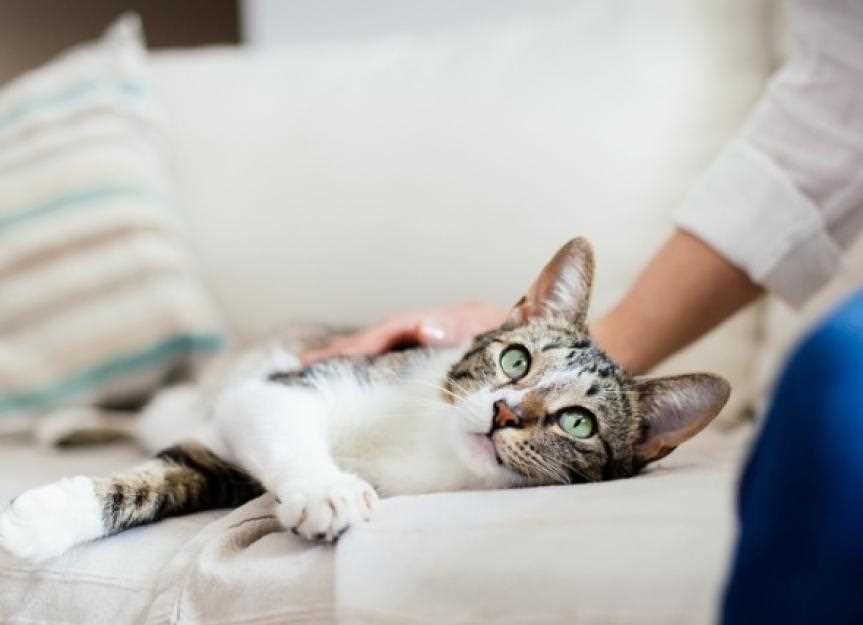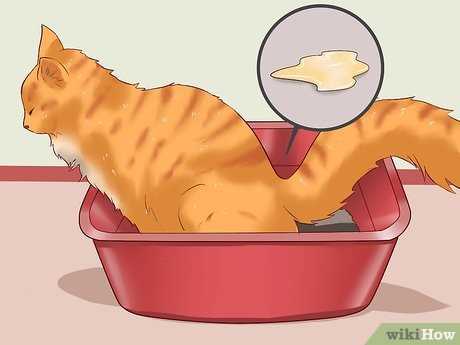Increasing water intake is essential for enhancing regularity. Encourage hydration by providing fresh water daily and considering pet water fountains that make drinking more appealing. Wet food can also contribute significantly to fluid consumption.
A high-fiber diet plays a pivotal role in promoting digestive health. Incorporate fiber-rich options such as pumpkin puree or specialized cat food designed to aid digestion. Be cautious with changes; introduce new foods gradually to avoid upset.
Regular exercise stimulates bowel movements. Engage in interactive playtime with toys or laser pointers to keep your feline friend active. A few minutes of play each day can encourage natural elimination processes.
If natural methods do not yield results, consult a veterinarian for appropriate interventions. They may recommend specific over-the-counter solutions or medications tailored to your pet’s needs.
Tips for Managing Feline Digestive Issues
Increase hydration by providing fresh water daily. Consider a cat water fountain; the flowing water attracts me more than a stagnant bowl.
Incorporate fiber-rich foods into meals. Canned pumpkin or specialized fiber supplements can aid in digestion.
Encourage physical activity. Playtime with feather toys or laser pointers promotes movement, which helps stimulate bowel function.
Monitor litter box habits closely. If there’s a change in my routine, alert the human immediately. Early detection can prevent escalation.
Consult a veterinarian about suitable laxatives. Always follow professional advice for appropriate dosage and type.
Regular vet visits ensure overall health checks. Discuss any ongoing issues or dietary changes to maintain wellness.
Identifying Signs of Constipation in Cats
Pay attention if you notice me straining in the litter box. If I spend more than a few minutes trying to go but nothing comes out, it’s a clear sign that something’s not right. Additionally, if my stool appears dry and hard, that’s another indicator of trouble brewing in my tummy.
Watch for changes in my behavior. If I seem less active than usual or refuse to play, these could be signs of discomfort. You might also notice me hiding more often or being less social. If I’m grooming myself less or if my coat looks dull, it might be time to investigate further.
Changes in appetite can also be a clue. If I suddenly lose interest in my food or stop eating altogether, it’s worth noting. Additionally, if I start drinking more water than usual, it could be a sign that I’m trying to alleviate some discomfort.
Keep an eye on my body language. If I’m pacing around or vocalizing more than normal, I might be trying to tell you something. Don’t ignore these signals; they can help you identify an issue early on. For more information on dietary supplements that may aid digestion, check out where can i find rice protein powder.
Assessing Dietary Factors Contributing to Constipation
Evaluate the fiber content in meals. A diet low in fiber can lead to difficulties during elimination. Aim for food containing at least 2-3% dietary fiber. Consider incorporating high-fiber options like pumpkin or psyllium husk into daily portions.
Monitor hydration levels. Insufficient water intake often results in dry stool. Offer fresh water daily and consider adding wet food to the diet. Canned options can increase moisture content significantly.
Review protein sources. Excessive protein without balance can hinder digestion. Ensure a mix of protein sources, including fish, poultry, and plant-based proteins. Observe reactions to different proteins to determine preferences.
Analyze carbohydrate types. Some grains can cause digestive issues. Opt for high-quality, digestible carbohydrates like brown rice or oats while avoiding fillers such as corn or wheat.
Check for food intolerances. Uncommon ingredients may lead to discomfort. Gradually introduce new foods and keep a diary of any changes in behavior or bowel habits to identify potential allergens.
Consider portion sizes. Overfeeding can overwhelm the digestive system. Follow feeding guidelines based on body weight and activity level, adjusting as necessary to maintain a healthy weight.
Regularly assess changes in diet. Shifts in food can affect digestion. Introduce new items slowly, allowing time to observe effects on stool consistency and comfort.
Incorporating Hydration Strategies for Your Feline Friend

Encouraging water intake is key for maintaining a healthy digestive system. One effective method is to provide fresh, filtered water daily. I find that my humans refill my bowl regularly, ensuring it’s always clean and appealing.
Consider adding wet food to the menu. I enjoy my meals more when they include moisture-rich options. This not only satisfies my taste buds but also boosts my hydration levels. Look for high-quality canned food that lists meat as the first ingredient.
Water fountains are another great addition. They create a flowing stream that intrigues me, making drinking more fun. I often find myself playing with the water before taking a sip!
Try flavoring the water with a splash of low-sodium chicken broth or fish broth. It enhances the taste and encourages me to drink more. Just make sure it’s free of onions and garlic, as those can be harmful.
Herbs like catnip can also be sprinkled in my water bowl or food. Not only does it make my meals more enticing, but it also helps keep me hydrated.
Set a routine for hydration. My humans ensure I have access to water during meal times and throughout the day. They keep an eye on my drinking habits, adjusting my diet as necessary to promote optimal fluid intake.
Choosing the Right Laxatives for Cats

For those moments when I face a bit of trouble in the litter box, picking the right laxative is key. My human should consult a veterinarian before trying anything new, as not all remedies are safe for every feline. Here are some common options that could help ease discomfort:
Types of Laxatives
| Laxative Type | Description | Notes |
|---|---|---|
| Fiber Supplements | Products like psyllium or canned pumpkin help increase fiber intake. | Start with small amounts to avoid a sudden change in diet. |
| Stool Softeners | Medications such as docusate sodium assist in softening stool. | Veterinary guidance is necessary for proper dosage. |
| Osmotic Laxatives | Products like lactulose draw water into the intestines, aiding in stool passage. | Monitor for dehydration; always hydrate well. |
| Enemas | Used to clear severe blockages, these should only be administered by a vet. | Risk of injury if done improperly. |
It’s vital to avoid human laxatives, as they can be toxic. Always read labels carefully and ensure any product is formulated for felines. Keeping my litter area clean and maintaining regular hydration are also effective ways to prevent issues. My human sometimes uses wipes for cats bottoms to keep everything tidy. This can be helpful after any laxative treatment.
When to Consult a Veterinarian for Constipation
If my litter box habits become inconsistent for more than two days, seeking veterinary advice is necessary. Observing any of the following signs warrants a visit:
- Straining without success during attempts to eliminate waste.
- Presence of blood in the stool or around the litter box.
- Vomiting or loss of appetite alongside the issue.
- Abdominal swelling or discomfort when touched.
- Behavior changes, such as hiding or excessive vocalization.
During a consultation, the veterinarian may perform a physical examination and possibly recommend diagnostic tests to determine underlying causes. Always be prepared to share details about dietary habits and any recent changes in routine. This information aids in accurate assessment.
In cases where the situation does not improve with home remedies, don’t hesitate to reach out to a professional. Timely intervention can prevent more serious complications.
Preventive Measures to Avoid Future Constipation
Regular exercise keeps my body in shape and aids in digestion. I enjoy chasing toys and engaging in playtime, which helps maintain healthy bowel movements.
A high-fiber diet is key. I suggest incorporating wet food and fiber-rich treats into meals. This enhances hydration and supports digestive health.
Hydration is Non-Negotiable
Access to fresh water is a must. I always have a clean bowl available, and I enjoy a water fountain that encourages me to drink more. Wet food also contributes to my hydration needs.
Routine Veterinary Check-ups

Regular visits to the vet ensure that any underlying health issues are caught early. Discussing dietary needs and potential issues with a professional helps keep my digestive system functioning properly.
Observing my daily habits is important. If I notice any changes in my bathroom routine or behaviors, it’s time to address them immediately to prevent future problems.






